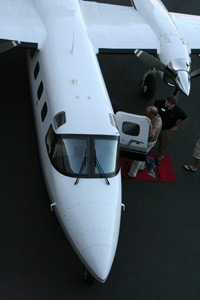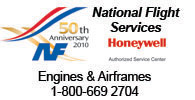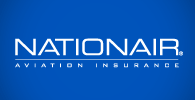LAST CALL FOR SPECIAL TAX
INCENTIVES FOR 2010

By Louis M. Meiners

New Legislation Looming in the Senate
At this writing the Bonus Depreciation Extension to Create Jobs Act (S.3513) was attached to an amendment to the Small Business Lending Fund Act (H.R. 5297) that passed the House in June. Although there is certainly no assurance that either the amendment or the original bill will pass, bonus depreciation has strong bipartisan support and is recognized as an effective job-creating incentive. The Senate bill would retroactively reinstate bonus depreciation for new equipment purchases for 2010. The bill would also extend the enhanced expensing election into 2011.
How Tax Savings Can Reduce the Cost of Improvements to Your Aircraft
The special tax savings currently in the law for 2010 purchases will allow immediate expensing for both new and used property, including airplanes and improvements to airplanes. There are three principal qualification requirements:
Investment Threshold. The small-business taxpayer is classified as such in the statute based on the level of their capital purchases throughout the year. If the taxpayer invests less than $800,000, he is entitled to expense the first $250,000, and then calculate depreciation on the balance. For taxpayers who invest more than $800,000 during the taxable year, the expensing is phased out on a dollar-for-dollar basis resulting in complete elimination when the total capital investment exceeds $1,050,000 per year. The expensing deduction is calculated before depreciation with the non-expensed portion subject to normal depreciation rules.
Taxable Income Limitation. The maximum amount that may be expensed is further limited to the amount of taxable income from any of the taxpayer�s active trades or businesses. Taxable income for this purpose is calculated before the expensing deduction itself, net operating loss carry-backs or carry-forwards, and other losses suspended due to basis limitations or passive activity classifications. Any amount suspended under the taxable income limitation is carried over indefinitely. It is important to note that the taxable income limitation is calculated on the taxpayer�s combined trade or business income; it is not calculated on a per-trade or business basis. Finally, wages paid to a taxpayer constitute trade or business income for the purpose of this calculation.
Asset Qualification. In order to qualify for the expensing election, the asset must constitute property eligible for MACRS depreciation. MACRS depreciation is not available to aircraft used less than 50 percent for business and certain leased assets.
If Bonus Depreciation Becomes Law For 2010
To the extent that a taxpayer invests more than $250,000, or does not meet the qualification requirements outlined above for expensing, the balance of the investment in new assets may then qualify for bonus depreciation. Bonus depreciation extends not only to new aircraft purchases but also new improvements on used aircraft. For example, purchases of new avionics units, engines, winglets and the like would qualify for bonus depreciation.
Rehabilitated used property would not qualify if more than 20 percent of the components are used; however, new components in the rehabilitated asset would qualify. For example, new turbine wheels installed by the taxpayer in a rehabilitated aircraft engine will qualify for bonus depreciation even if the engine itself fails to qualify. Finally, it is important to note that, because Section 179 expensing applies to new and used components, a taxpayer may elect to take 179 deductions against the used assets and take bonus depreciation against the new.
In summary, 2010 is a special year. Under present law enhanced expensing is scheduled to expire December 31. Under proposed law bonus depreciation will be re-instituted for all of 2010, and enhanced expensing will extend into 2011. Under either scenario tax incentives may reduce the cost of aircraft improvements placed in service before December 31, 2010.
Advocate Consulting Legal Group, PLLC is a law firm whose practice is limited to serving the needs of aircraft owners and operators relating to issues of income tax, sales tax, federal aviation regulations, and other related organizational and operational issues.
IRS Circular 230 Disclosure. New IRS rules impose requirements concerning any written federal tax advice from attorneys. To ensure compliance with those rules, we inform you that any U.S. federal tax advice contained in this communication (including any attachments) is not intended or written to be used, and cannot be used, for the purpose of (i) avoiding penalties under federal tax laws, specifically including the Internal Revenue Code, or (ii) promoting, marketing or recommending to another party any transaction or matter addressed herein.
Discuss this article in the forums...







